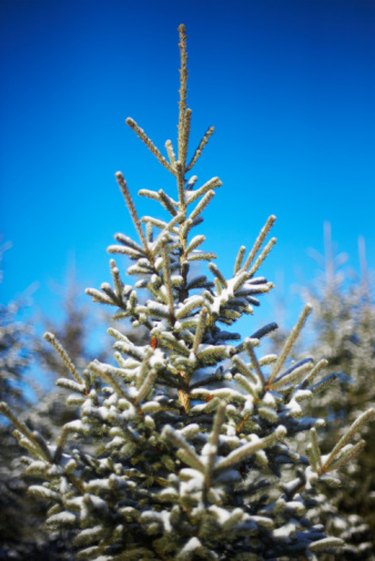
Evergreen trees are an important part of the landscape, providing not only year round color and elegance, but also shade, shelter and protection for birds and wildlife. Evergreen trees can also act as effective windbreaks or privacy screens. The long, varied list of evergreens includes fir, juniper, pine, larch, spruce and arborvitae. Although evergreen trees require very little attention once the trees are established, proper watering and well-drained soil are critical factors at the sapling stage.
Step 1
Water evergreen trees regularly during the first year after planting. Give the tree 1 to 3 inches of water every week, unless moisture comes in the form of rainfall. Watering deeply once or twice weekly is better than more frequent, shallow irrigation, as deep watering will develop long, healthy roots. Shallow roots will be more prone to damage from drought.
Video of the Day
Step 2
Irrigate established evergreen trees deeply during hot, dry periods of summer, when there has been no rainfall for four to six weeks. Continue to water evergreen trees until it rains or until the ground freezes.
Step 3
Water evergreen trees using a drip irrigation system or a soaker hose. Alternatively, allow a garden hose to drip slowly at the base of the plant. Arrange the watering system so the water is directed into the soil under the foliage.
Step 4
Avoid watering past the drip line, which is the line where rain drips from the outer branches. Avoid watering within 3 feet of the trunk, unless the tree is less than a year old. For evergreen trees less than a year old, allow the water to drip into the soil over the root ball.
Step 5
Irrigate evergreen trees deeply enough to soak the roots before the first expected hard freeze in your area. Watering before the first freeze will ensure that the roots will remain hydrated throughout the winter. Dry, frozen soil can cause winterburn.
Step 6
Water evergreen trees at night to avoid less moisture loss due to evaporation. Don't wet the foliage.
Video of the Day